Student Resource Center
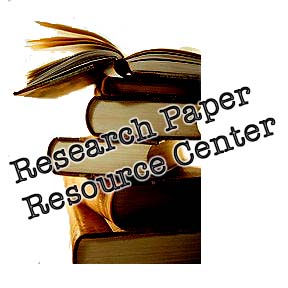 If you are a student...
If you are a student...
You have just discovered the most intriguing topic one could choose for a research paper or a class project.
Nothing could be more fascinating than the most famous unsolved mystery of all time: The Shroud of Turin.
-
Need a topic for a paper? Listed below are numerous ideas to consider.
-
Doing a presentation for speech? The use of visuals, multiple points of evidence and the implications of authenticity make for a fascinating presentation guaranteed to generate lots of discussion.
-
Do you need a project for art, history or science? The visual, scientific and historical aspects make for a terrific project covering numerous avenues of research. You can also drill deep into one specific discipline.
TEN Different Schools
The subject of the Shroud has intrigued hundreds of researchers over the past century from medical experts to physicists to chemists to historians to art experts to textile experts to archaeologists to botanists...and the list goes on. Because the subject covers so many avenues of analysis, Shroud University is broken down into TEN different academic disciplines. As a researcher, you may focus on one area or draw from several. Below are just a few ideas for your consideration. Go to each individual school for more ideas than those represented here.
From the School of General Studies
For a good overview of the Shroud, start here in the School of General Studies. Before tackling the specifics, one should be familiar with the subject in general. Here you will find several good documentaries that can be viewed via streaming media. Also read Dan Porter's excellent "The Shroud of Turin for Journalists," written for the 2006 Winter Olympics held in Torino (Turin), Italy-home of the Shroud.

The Carbon 14 Dating Controversy continues to rage. Latest research shows that the carbon dating labs totally blew it in 1988 by taking only one sample from an area of the cloth that was most likely repaired. They were supposed to cut from three different locations, not just one. They did not follow the protocol established for the tests. They were supposed to do micro-chemical analysis of the sample to make sure it was representative of the entire Shroud. They didn't do this either. Now the research shows that what they dated may have been a medieval re-weave.
Project ideas related to the Carbon Dating Controversy:
How can good science go bad? By not following established protocols, the carbon dating labs arrived at a conclusion with a “confidence factor of 95%” based on a bad sample. How could this happen? Delve into the intrigue and see how the whole thing may have been botched.

Shouldn’t science be a synthesis of evidence? The carbon dating results overshadowed the Shroud for 17 years because it was considered a litmus test. The medieval date flew in the face of other evidence, but it didn’t matter because to most scientists carbon 14 dating is like DNA-it doesn’t lie. Unless of course you have the wrong DNA. In the end, carbon 14 must be taken in context with other evidence and not to the exclusion of everything else known about the subject. Discuss the principles of epistemology and how there should be an attempt to reconcile divergent streams of evidence. This is not the case with the Shroud; there are very few fence sitters. Most are ardent supporters of one side or the other generating much heated debate (and makes the subject that much more fascinating!).
Is there a resolution or does it hinge on the world view or vested interests of those involved?
Are the camps forever irreconcilable due to matters of belief?
How is information filtered by a person's world view, preconceived ideas and beliefs?
How does this conflict impact other areas of science such as the perennial debate over evolution versus intelligent design?
Does one's belief always interfere with an objective evaluation of the data?
Could it be 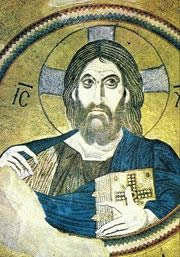 simply a Medieval work of art? Do a paper on art in the middle ages.
simply a Medieval work of art? Do a paper on art in the middle ages.
-
What skills and knowledge did artists possess in the 1300s?
-
What materials did they have to work with?
-
See why art experts say that the Shroud could not be a painting.
-
Discuss the unique aspects of the Shroud image and compare it to other known art works of the period.
Do a paper on the Cultural Context of Art. Show how art is evolutionary and how each great master builds upon the work of a previous one. Show how art always fits into the cultural context of the period. Some have said that for the Shroud to be an artwork from the middle ages, would be like finding Andy Warhol's Marilyn Monroe in ancient Egypt. Does the Shroud fit into a medieval context?
Does Botanical Evidence Place it in Israel? Scientists often want to assert that their particular field is superior to the next. Many have minimized the evidence of pollen and flower images on the Shroud. However, botanical evidence are strong indicators that it originated in Israel. This flies in the face of detractors who claim it is a medieval fake. As a result, the evidence from botany is often dismissed by critics. Yet the most prominent botanist in Israel claims that the botanical evidence supports the cloth’s origin from the area of Palestine. Do a paper that discusses this evidence and how it supports the historical trail prior to the middle ages.
How and when was the Shroud Manufactured? Is it of medieval or ancient origin?

Does the Shroud conform to what is known about first century Jewish burial shrouds?
What does the apparent banding on the linen indicate about its manufacture?
Were the threads hand spun or made on a spinning wheel?
What kind of loom could create a 3:1 herringbone pattern weave?
Was that technology available in the first century?
How was flax prepared for weaving into linen?
From the School of Physics
It was 30 years ago that The Shroud of Turin Research Project (STURP) stunned the world with evidence pointing towards the authenticity of the Shroud. What was the project all about? How and why did so many scientists come together to study a religious relic? Did they have a religious axe to grind? Who were the scientists and what tests did they perform? What laboratories did they represent? What restrictions were placed on them? What kinds of data did they obtain? What were the results of their examination? What are the physical properties of the image?
What data was 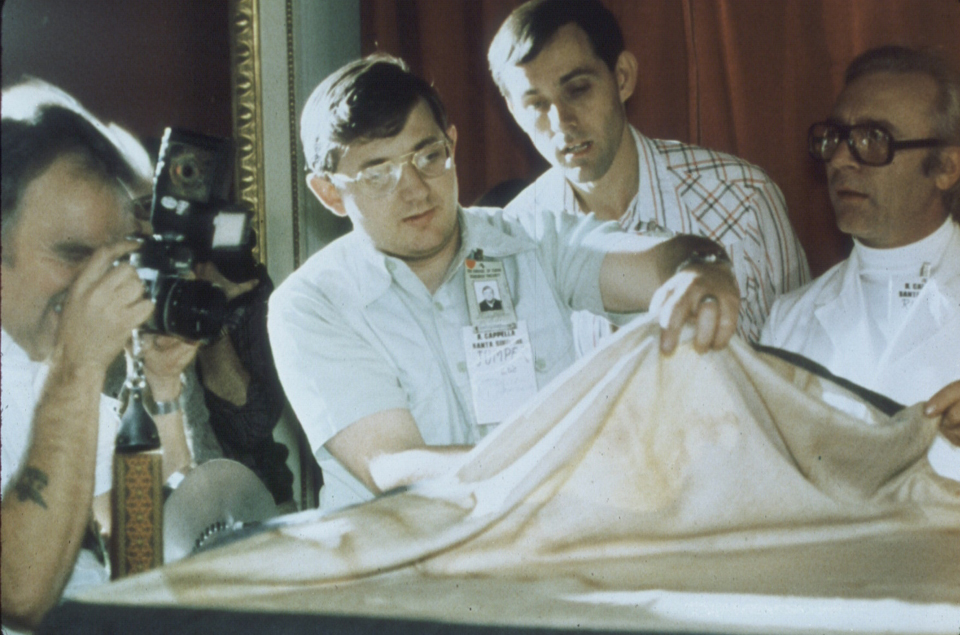 obtained for analyzing the blood? Doctors John Heller and Alan Adler determined several chemical components of blood. McCrone says it's vermillion paint. Who is right? What are the physical characteristics of the bloodstains that indicate authentic blood from actual wounds? What are the spectral characteristics of the blood? Could the blood have simply been painted on by an artist as some have alleged?
obtained for analyzing the blood? Doctors John Heller and Alan Adler determined several chemical components of blood. McCrone says it's vermillion paint. Who is right? What are the physical characteristics of the bloodstains that indicate authentic blood from actual wounds? What are the spectral characteristics of the blood? Could the blood have simply been painted on by an artist as some have alleged?
There is much to debate and the issue ultimately comes down to which scientists and what science do you want to believe? As referenced in the School of Chemistry, the carbon dating results from 1988 are an enormous source of debate-especially now that renowned chemist Ray Rogers has determined the sample cut for the dating is chemically different from the rest of the Shroud. How is that possible? Was it rewoven as part of a repair as some believe? How can the dating tests be considered credible when they violated the sampling protocol by limiting the test to one questionable sample from an area any archaeologist would have avoided like the plague? Does the cloth even fit within a medieval context artistically or as a textile?
Another debate revolves around the work and claims of microscopist Walter McCrone. How is it possible that he can claim the image is the result of “red ochre paint” when no other test yields the same result? The iron oxide particles he claims were part of the paint are much too pure to have been from a medieval “jewelers rouge” as he alleges. Medieval paint is always contaminated with other trace elements and is much more coarse than the iron oxide particles seen on the Shroud.
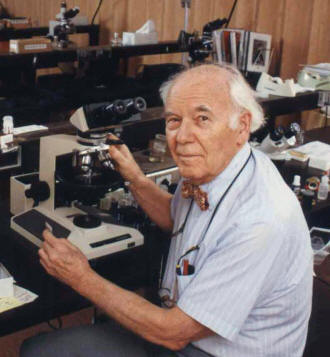
In addition, the particles are not concentrated in the image area but are randomly dispersed over the entire cloth. They do not constitute the image as determined by Doctors John Heller and Alan Adler. How can he then make his assertion in the face of so much conflicting evidence? Did he have an agenda to be the proverbial iconoclast for the sake of his own publicity? Compare his work on the Shroud with his work on the Vinland Map. McCrone says the map is a fake but Yale University and the Smithsonian Institute say it's authentic. Discuss the parallel between the Vinland Map and the Shroud of Turin.
From the School of Medicine
Do a paper on the Medical Forensics involved with the Shroud. Are the bloodstains just a clever paint job? Or are they from actual wounds? Delve into the debate that pits Microscopist Walter McCrone against every other scientist who was part of the Shroud of Turin Research Project (STURP). Blood chemists say it's blood. Somebody is wrong. Investigate the evidence for both arguments.
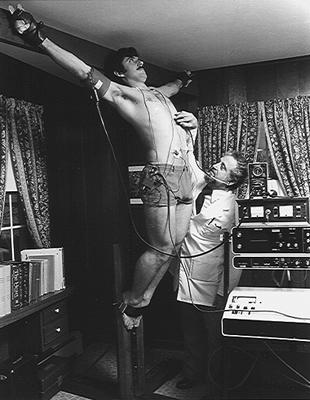
Assume it is an authentic image of a man who died from the wounds seen on the cloth. How did the man die? What do the medical pathologists and coroners say about the cause of death? Do they match up with the Gospel account? If the image is authentic, could it ever be determined to be that of Jesus of Nazareth?
Include the Shroud in a paper on modern torture and torture through the centuries. Incorporate the crucifixion as the most famous of all torture and execution methods initiated by the Romans. The Shroud may be a detailed account of what happened.
Use the Shroud as a way to Trace Christian history. Many historians believe it originated in Israel in the first century, then was taken to Edessa (Turkey) and became the prototype for all Byzantine Icons beginning in 544. It moved on to Constantinople in 944 and was then stolen during the Crusades in 1204. It was kept by the Knights Templar and then showed up in France in 1356. The trail ended in Turin, Italy in 1578. It started with the Jews, then became a Byzantine relic, then an Eastern Orthodox relic, then a Catholic relic, and was finally revealed to Protestant America through science. All three branches of Christianity are involved.
Do a paper on Byzantine Christianity and how the Shroud may have influenced the beginning of images and icons that permeate the Eastern Church. How the Catholic "Veronica" cloth may have been an adaptation of the Edessa image that was known throughout Byzantium as the "True Likeness". In Latin, Vera Icon was transliterated into "Veronica".
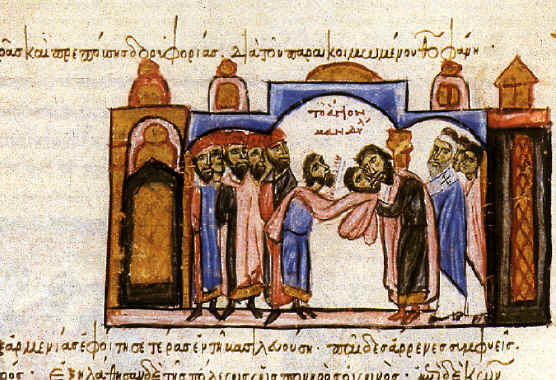
Do a paper on the mysterious Knights Templar, how they might have been the protectors of the Shroud after its disappearance from Constantinople in 1204. The Templars are a fascinating subject and the Shroud can be woven into the story. When they were finally deposed by the King of France and the Pope in 1307, two leaders were burned at the stake for heresy. What was their heresy? (They “worshiped” a mysterious image.)
Do a paper on the Crusades, in particular the 4th Crusade, which was one of the lowest points of Christian history, when the west turned on the east and invaded Constantinople instead of the Holy Land. A tragic event when half of Constantinople (now Istanbul), was burned. The gold, silver and ivory were stolen by the Venetians, and the relics of the saints were taken by the French including; "Most holy of all, the linen in which our Lord was wrapped after his death and before his resurrection". What disappeared from Constantinople in 1204? Was it the Shroud? Is this what ended up in the hands of the Templars?
Discuss the Shroud as one of many potential evidences for faith, i.e. Christian Apologetics such as archaeological supports, prophetic fulfillment, etc. The shroud was the first piece of evidence found by Peter and John (John 20:1-8) and caused them to believe that Jesus had risen from the dead. Mary thought the body was stolen. What did they see?
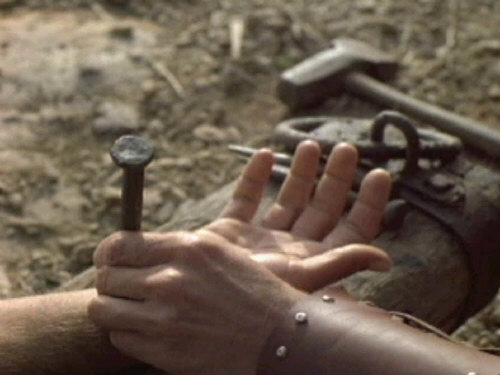
Discuss The Distinctiveness of Christ's Crucifixion and how it was totally unique as compared to other known crucifixions. Do the unique aspects of his entire ordeal (i.e. crown of thorns, wound in the side, severe scourging, legs not broken, etc) allow us to identify the man on the Shroud?
Do a paper on the Role of Relics and Icons in the church. Show how Catholicism may have put too much emphasis on relics and icons in centuries past, to the point that many want to distance themselves from it today. But at the same time, the Protestant Reformation discounted all consideration of relics, such that any and all were dismissed. Perhaps there is a middle road. Unlike the bones of some saint or an alleged piece of the cross, nothing bears testable evidence like the Shroud of Turin.
Do a paper on the Theological Ramifications of the Shroud. What if the Shroud is truly authentic? What is the message? What is the significance?

Shroud University • © 2014 • Shroud of Turin Education Project, Inc.
P.O. Box 3397, Peachtree City, GA 30269 • Office 678-817-7188
Contact Us • Home
